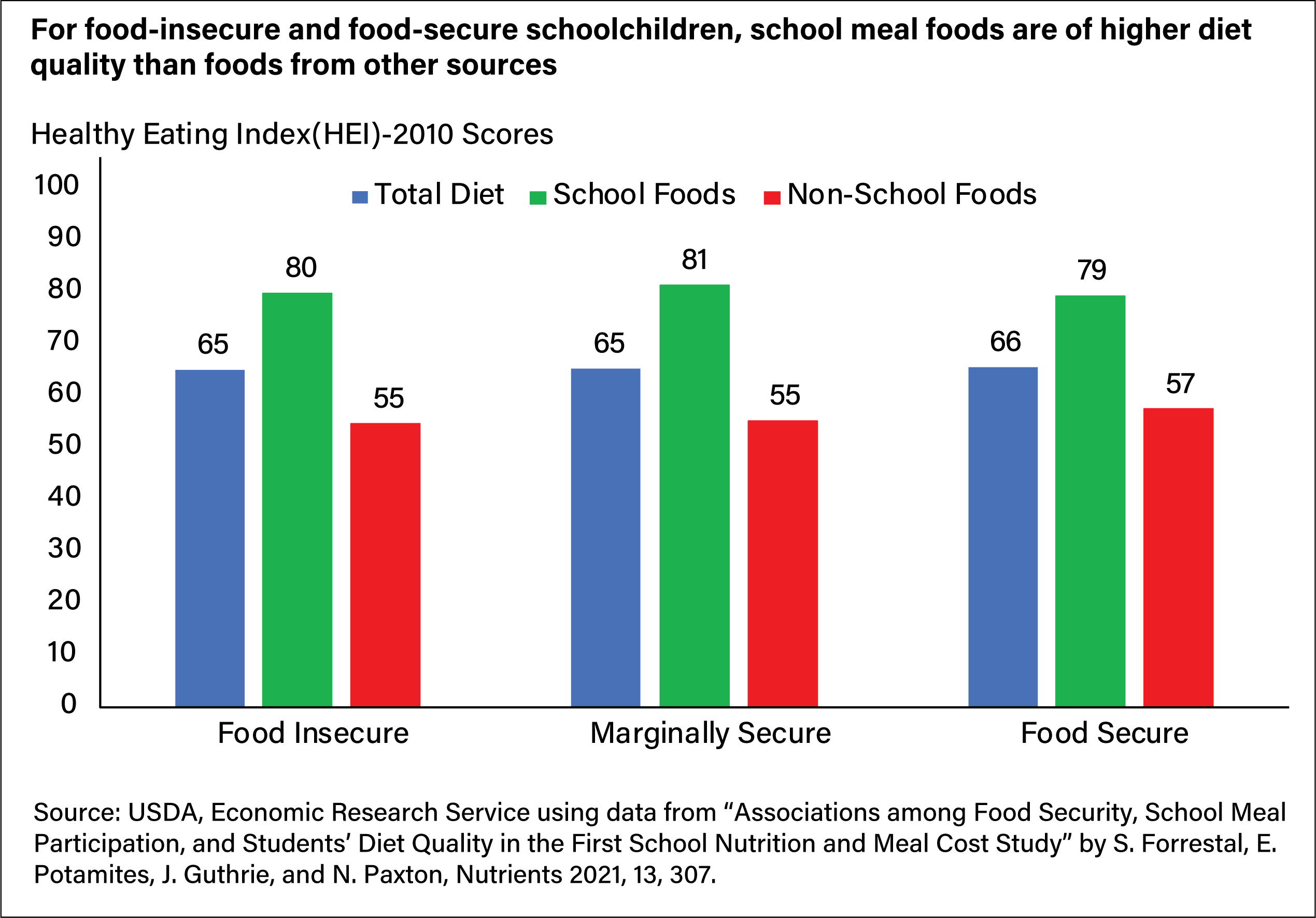
USDA School Meals Support Food Security and Good Nutrition
- by Joanne Guthrie
- 5/3/2021
Many schools across America moved to distance learning in response to the coronavirus COVID-19 pandemic in 2020. To support children’s nutrition and food security during this time, USDA extended waivers allowing local schools to provide USDA school meals through creative strategies such as grab-and-go or off-campus delivery. Recent research on the relationship of USDA school meals to food security and nutrition informs potential benefits of this decision.
On a typical school day in 2019, the USDA’s National School Lunch Program (NSLP) served 29.4 million children, and the School Breakfast Program (SBP) served close to 15 million children. Of those totals, schools served 74 percent of lunches and 85 percent of breakfasts to low-income students for free or for a reduced price. School meals are required to meet Federal nutrition standards and regularly include low- or nonfat milk, whole grains, fruits, and vegetables. A USDA, Economic Research Service (ERS) researcher collaborated with non-ERS researchers on a study that highlights the role USDA school meal programs play in the diets of some of America’s most vulnerable children—those living in food insecure households.
Food security is defined as access by all people at all times to enough food for an active, healthy life. Food-insecure households are unable to acquire adequate food for one or more household members because of insufficient money and other resources. In 2019, the ERS’ annual report on household food security classified 14 percent of households with children as food insecure (meaning adults, children, or both were food insecure) at some time during the year. Although adults typically try to shield children from experiencing food insecurity, children were reported to be food insecure in 7 percent of households with children. For children in food-insecure households, school meals can be an important resource.
The researchers used data from USDA’s School Nutrition and Meal Cost Study-I, which collected information on USDA school meal participation and foods obtained from school meals versus other sources from a national sample of school children in 2014-15. Students were classified as living in food insecure, marginal, or secure households based on food security information provided by a parent.
Significantly more students from food-insecure and marginally secure households participated in the NSLP, 79 and 71 percent respectively, compared to 49 percent of students from food-secure households. SBP participation was lower for all groups, although it was higher for those whose households were food insecure (38 percent) or marginally secure (33 percent) compared with the food secure (16 percent). Consistent with this higher level of participation, school meals contributed significantly more food energy, or calories, to the diets of students from food-insecure and marginally insecure households than to diets of food-secure students (22 percent, 20 percent, and 13 percent, respectively).
While USDA school meals were bigger contributors to the caloric intakes of students from less food-secure households, they contributed positively to the diet quality of all participating students. The nutritional quality of school and non-school foods that students consumed was assessed on the basis of the Healthy Eating Index (HEI)-2010, USDA’s measure of how well diets match Federal dietary guidance. HEI scores range from 0 to 100. Higher scores indicate more of recommended food groups such as lowfat dairy, whole grains, fruits, and vegetables, and lower amounts of dietary components such as sodium, added sugars, and solid fats. For both food-insecure and food-secure students, the average HEI scores for non-school foods were between 55 and 57, whereas school foods scored between 79 and 81. School foods were particularly noteworthy as sources of fruit, dairy, and whole grains.
This article is drawn from:
- Forrestal, S., Potamites, E., Guthrie, J. & Paxton, N. (2021). Associations among Food Security, School Meal Participation, and Students’ Diet Quality in the First School Nutrition and Meal Cost Study. Nutrients. 13, 307.
You may also like:
- Child Nutrition Programs. (n.d.). U.S. Department of Agriculture, Economic Research Service.


